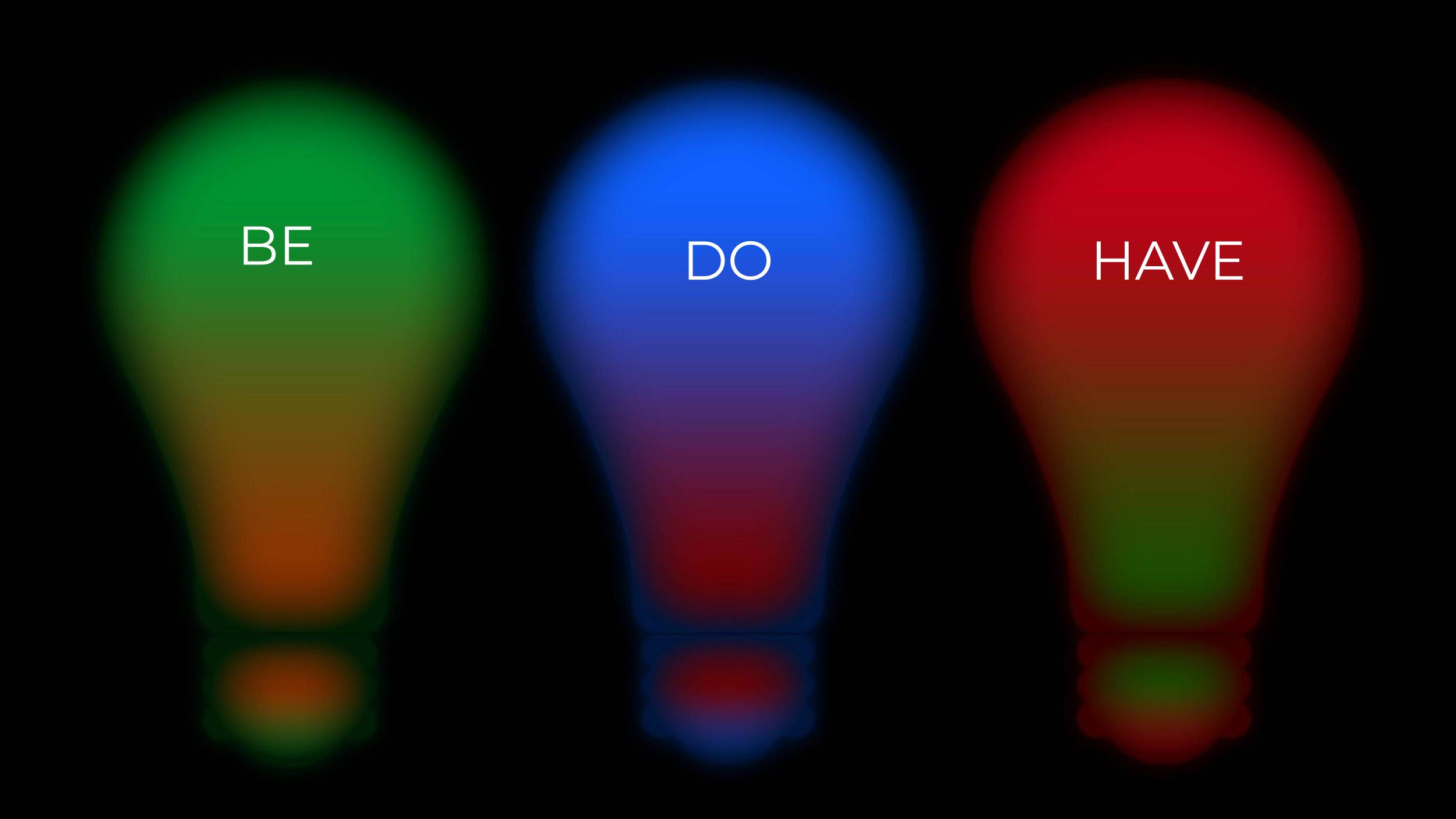A 2015 study conducted at premier European business school ESADE demonstrated that individuals with leadership ability, no matter their position or personality profile, shared a single trait in common: the ability to influence their own nervous systems, and by extension the nervous systems of others. These findings underscored the fact that genuine influence does not depend upon having authority. Regarding authority vs influence, authority tends to accrue to people with the ability to influence themselves and others – regardless of their position in the organizational hierarchy.
The fundamental difference between authority and influence lies in the models each uses to accomplish goals.
Influence operates through the Be-Do-Have model, while Authority typically operates under the Have-Do-Be model. The two approaches differ in their long-term effectiveness, and in the types of organizational cultures they produce.
The Be-Do-Have Model
Decades ago, Steven Covey introduced the Be-Do-Have model to the mainstream in his book The 7 Habits of Highly Effective People. The idea is very simple:
After establishing a desired goal, we successfully achieve it by asking three questions in a specific sequence:
Who do I need to be in order to accomplish this goal?
What do I need to do in order to accomplish this goal?
What do I need to have in order to accomplish this goal?
The Be question must be asked first because it determines your state of being. It is who you are, not what you have or what you do, that drives influence.
Surprisingly, the Be-Do-Have model is not the most commonly used in the workplace. Instead, most organizational cultures use the Do-Have-Be model. In other words, if we do such-and-such project – set up a sales funnel, launch an ad campaign, engage a vendor – then we can have increased profits, at which point we will be successful.
Other organizations engage the Have-Do-Be model, which can be described in the following way:
When I have the time, budget, and support I need, then I will be able to do the things that will enable me to be successful at achieving the goal.
Another variation for this model is: when I have the title and direct authority, I will be able to do such-and-such, at which time I will finally be successful at achieving the goal. This variation surfaces on a regular basis when employees are pitching for greater titles in order to be effective, rather than coming from a place of enrolling others in their vision to drive influence.
The Danger of Having Title & Authority As A Precondition For Success
Adopting the Have-Do-Be model can lead to mixed results, because by its logic, starting the project depends upon having met an external precondition (e.g., obtaining the authority)… and unfortunately, we don’t have control over external preconditions.
Here is an example of what this model may sound like in a team member’s mind:
“I would love to get multiple departments collaborating with each other and in closer communication, but ultimately, I don’t have the authority to sign off on an initiative like this. One day after I get promoted to manager, I’ll have the authority and we will get to it.”
In this scenario, it is quite unlikely that the individual’s desired outcome will ever be implemented. Needing to have authority as a precondition for undertaking a valuable project has rendered the individual completely passive.
In addition to passivity, another hallmark of the Have-Do-Be orientation is that it is excessively self-interested. Having a title wielding authority as a precondition for undertaking the initiative can also lead a person into thinking of their own advantage first, and what it will take for them to finally have authority. Now the scene is set for toxic office politics and calculated maneuvering in order to win a zero-sum contest for greater power.
From here, we can see how organizations that value authority more than other qualities like influence or collaboration, often have cultures divided along departmental lines, and competing centers of authority. The spirit of competition that would be well applied against industry competitors, instead shows up as friction in the organizational gears – leading to decreased retention, innovation, efficiency, and competitiveness.
At a minimum, this snapshot of the Have-Do-Be model is a representation of what can happen in organizational cultures that value externally-sourced Authority over all else.
The Power of Genuine Influence
The study referenced at the start of this article is an illustration of the effectiveness of the Be-Do-Have model. Participants who could regulate their own nervous systems were found to be capable of influencing the nervous systems of others. They could be calm and cool-headed in a stressful situation, for example, and draw their peers into this state as well – greatly increasing the odds of the group achieving its goal under stress.
The effectiveness of this influencing model lies in encouraging each individual to take personal responsibility for his or her contribution AND success of the project at large. Instead of waiting for an external precondition to be met, each person leads himself or herself into a desired state of being that is consonant with the desired goal or end result.
To re-purpose the example from above, the same person envisioning a more collaborative work environment may sound like this, if they were following Be-Do-Have:
I really think that we could save a lot of time and money, AND benefit from more of the team’s creativity – if we were just able to influence people to talk to each other and collaborate on initiatives. I’ll bet my boss will get on board if I describe it properly. I will be proactive here and even a little bit vulnerable, and request a meeting to discuss. I bet she will have some great ideas for this too.
A person who is able to influence him or herself into a mode of being consonant with achieving a stated goal, is then able to influence others. Such an influential individual will naturally accrue authority, and rise in the ranks of their organization.
For work teams, the greatest benefit of following the Be-Do-Have model is that it develops stronger bonds among team members, harnesses collaboration, and draws out as much of the creativity and intelligence of the team as possible.
Conclusion
The quest for influence is the quest to know oneself better and effectively create a collaborative team. Developing a team of influential people, or leaders, is something that can be done – steadily and methodically.
Thanks for reading!





